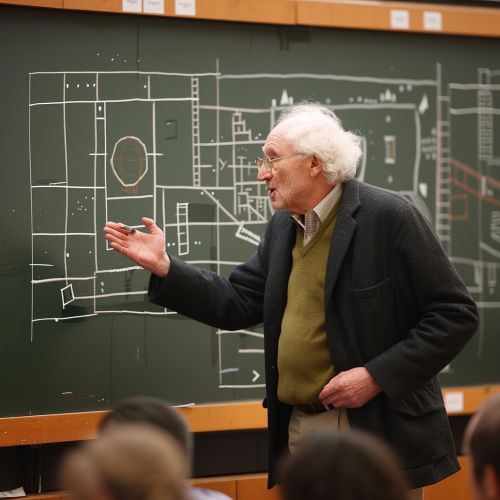Leonard Susskind
Early Life and Education
Leonard Susskind was born on June 16, 1940, in the Bronx, New York City. He grew up in a working-class family, where his father worked as a plumber. Susskind showed an early interest in science and mathematics, which led him to pursue higher education in these fields. He attended the City College of New York (CCNY), where he earned his bachelor's degree in physics in 1962. Following his undergraduate studies, Susskind went on to earn his Ph.D. in physics from Cornell University in 1965, under the supervision of Peter A. Carruthers.
Academic Career
After completing his Ph.D., Susskind began his academic career with a postdoctoral position at the Belfer Graduate School of Science at Yeshiva University. He then held a faculty position at the University of Tel Aviv before moving to Stanford University in 1979, where he has been a professor of theoretical physics ever since. Susskind is also a founding director of the Stanford Institute for Theoretical Physics.
Contributions to Physics
String Theory
Leonard Susskind is one of the founding fathers of string theory, a theoretical framework in which the point-like particles of particle physics are replaced by one-dimensional objects known as strings. String theory aims to reconcile quantum mechanics and general relativity, providing a unified description of all fundamental forces and particles. Susskind's work in the early 1970s, along with contributions from other physicists such as Yoichiro Nambu and Holger Bech Nielsen, laid the groundwork for the development of this theory.
Holographic Principle
In the 1990s, Susskind proposed the holographic principle, a conjecture about the nature of quantum gravity. The holographic principle suggests that the description of a volume of space can be encoded on a lower-dimensional boundary to the region. This idea has profound implications for our understanding of black holes and the nature of the universe. Susskind's work in this area has been influential in the development of the AdS/CFT correspondence, a realization of the holographic principle proposed by Juan Maldacena.
Black Hole Complementarity
Susskind, along with Gerard 't Hooft, developed the concept of black hole complementarity, which addresses the paradoxes arising from the behavior of information in black holes. This principle posits that information falling into a black hole is both reflected at the event horizon and passes through it, but no single observer can witness both processes simultaneously. This idea helps to resolve the information paradox associated with black holes.
Quantum Information Theory
In recent years, Susskind has made significant contributions to quantum information theory, particularly in the context of quantum entanglement and its relationship to spacetime geometry. His work has explored the connections between quantum information, entropy, and the structure of spacetime, leading to new insights into the nature of quantum gravity.
Publications and Books
Leonard Susskind has authored numerous scientific papers and several popular science books aimed at making complex theoretical concepts accessible to a broader audience. Some of his notable books include:
- "The Cosmic Landscape: String Theory and the Illusion of Intelligent Design" (2005)
- "The Black Hole War: My Battle with Stephen Hawking to Make the World Safe for Quantum Mechanics" (2008)
- "The Theoretical Minimum" series, co-authored with George Hrabovsky and Art Friedman, which includes titles such as "Classical Mechanics" (2013), "Quantum Mechanics" (2014), and "Special Relativity and Classical Field Theory" (2017)
Awards and Honors
Throughout his career, Leonard Susskind has received numerous awards and honors in recognition of his contributions to theoretical physics. Some of these accolades include:
- The J. J. Sakurai Prize for Theoretical Particle Physics (1997)
- The Oskar Klein Medal (2007)
- The Physics Frontiers Prize (2013)
- The Lorentz Medal (2018)
Personal Life
Leonard Susskind is married and has three children. He is known for his passion for teaching and has inspired many students and colleagues through his lectures and writings. In addition to his academic pursuits, Susskind enjoys outdoor activities such as hiking and skiing.
See Also
- String Theory
- Holographic Principle
- Quantum Mechanics
- General Relativity
- Black Hole Information Paradox
- Quantum Entanglement


References
- Susskind, Leonard. "The Cosmic Landscape: String Theory and the Illusion of Intelligent Design." Little, Brown and Company, 2005.
- Susskind, Leonard. "The Black Hole War: My Battle with Stephen Hawking to Make the World Safe for Quantum Mechanics." Little, Brown and Company, 2008.
- Susskind, Leonard, and George Hrabovsky. "The Theoretical Minimum: What You Need to Know to Start Doing Physics." Basic Books, 2013.
